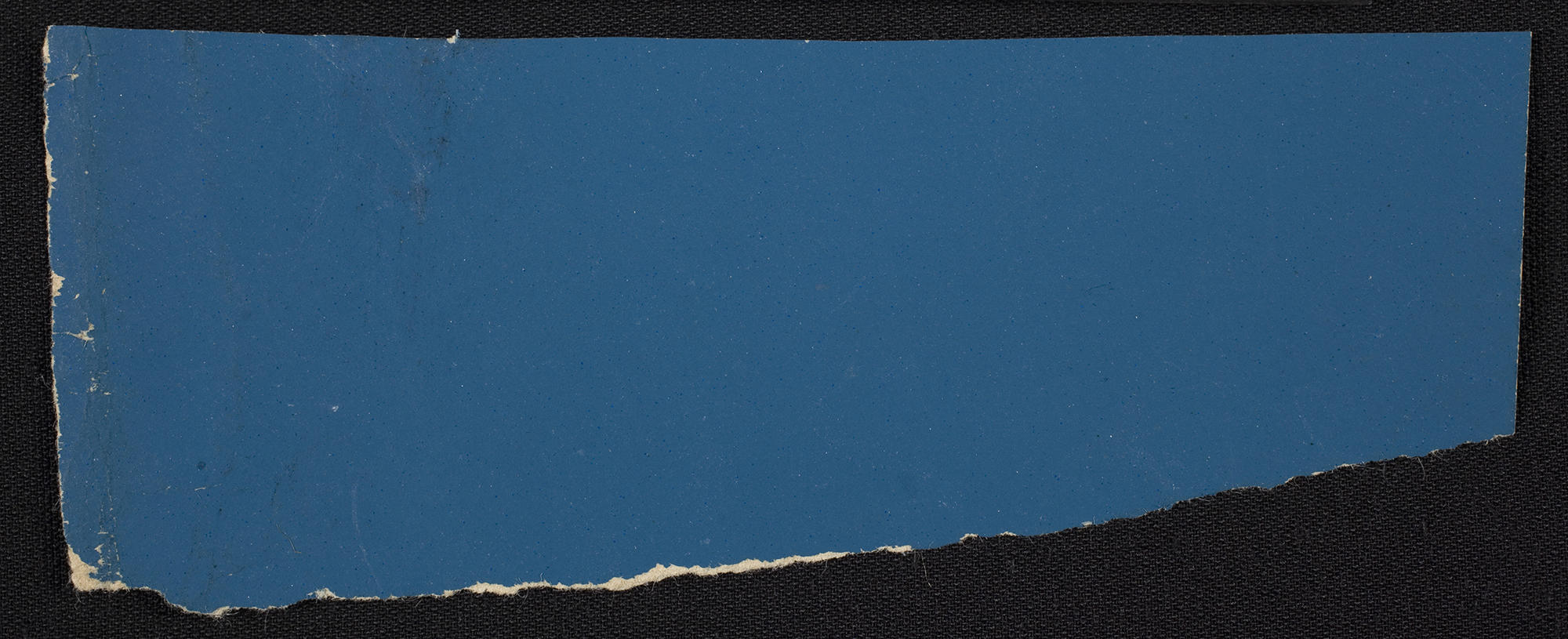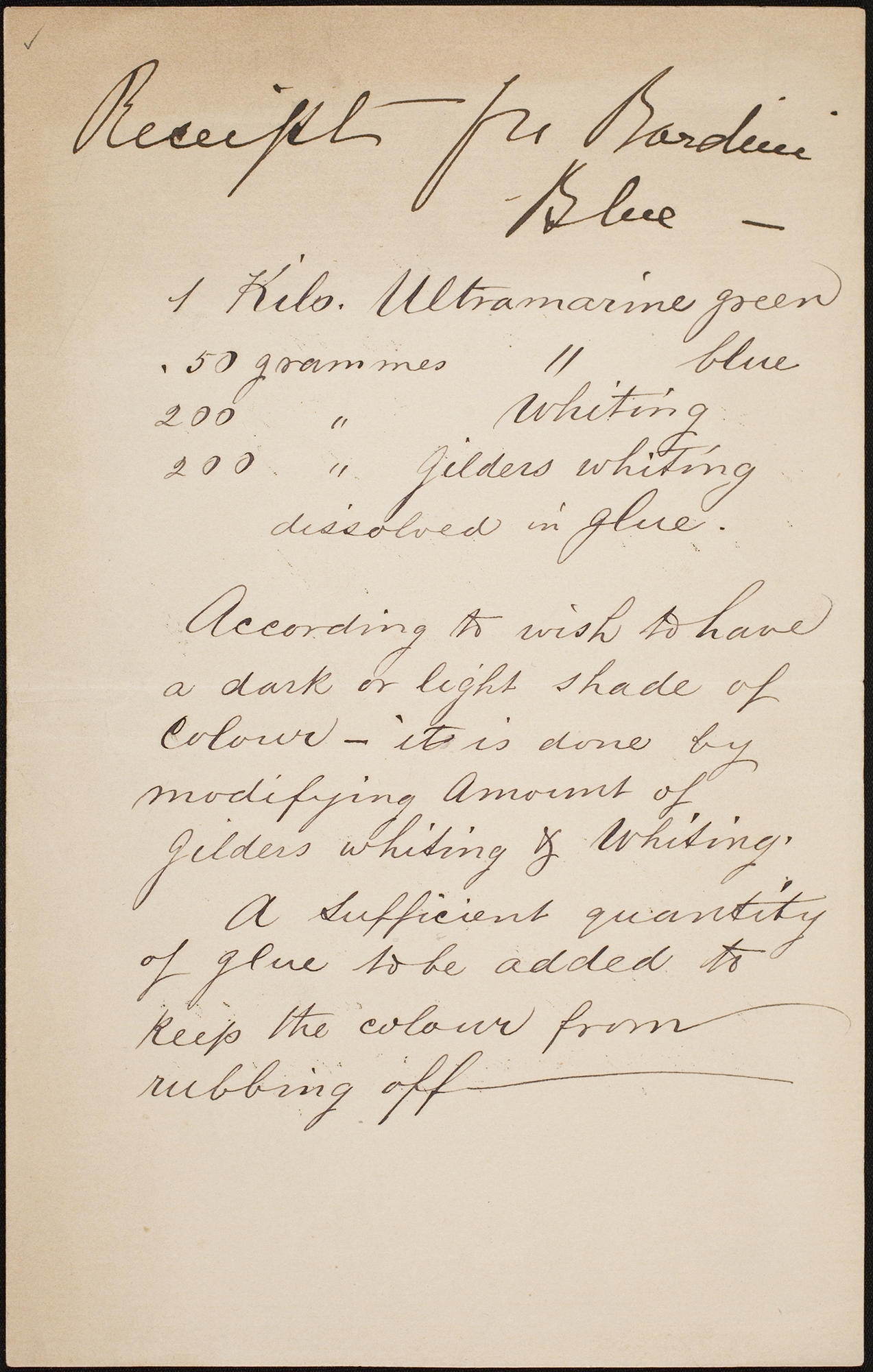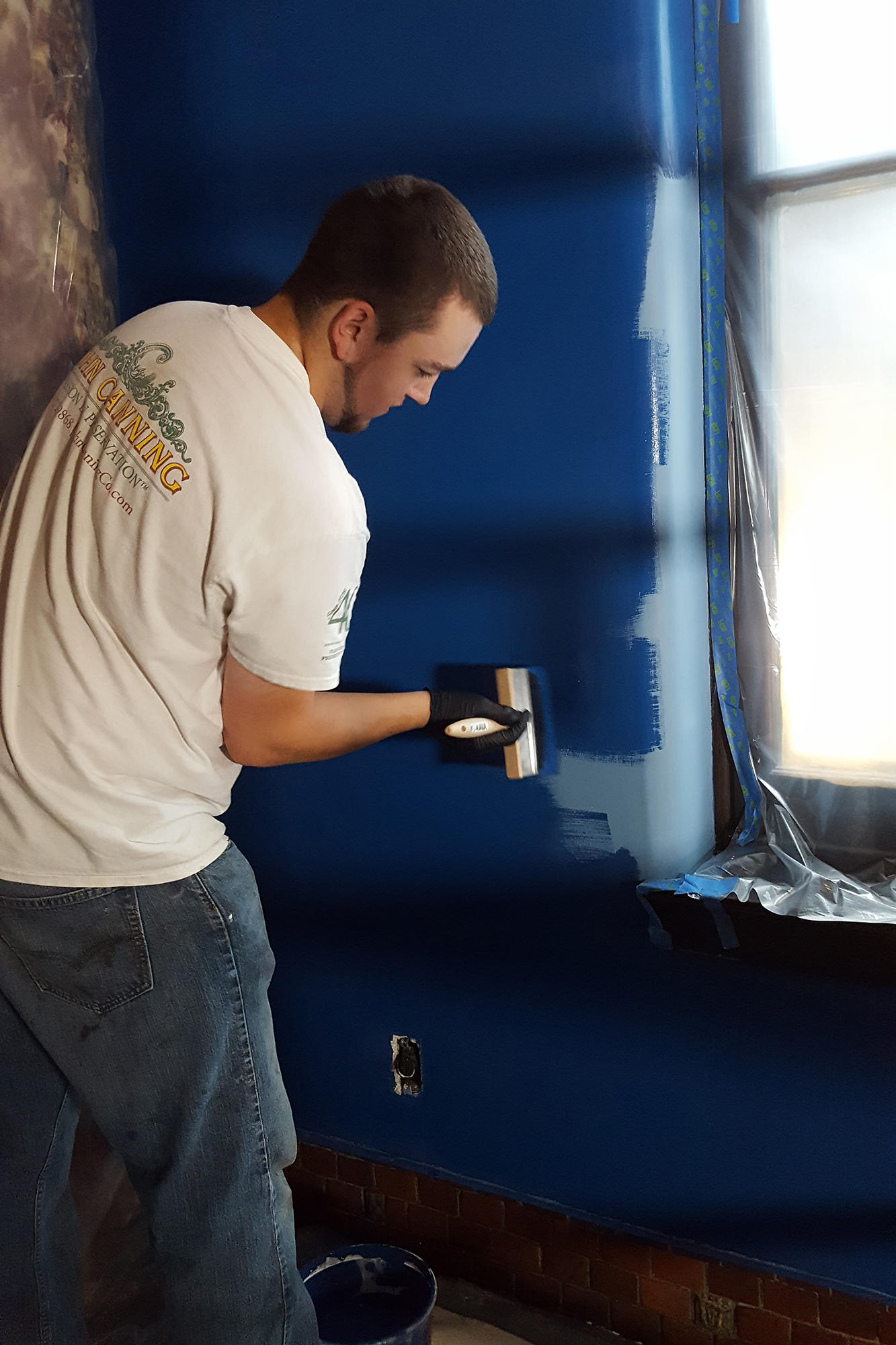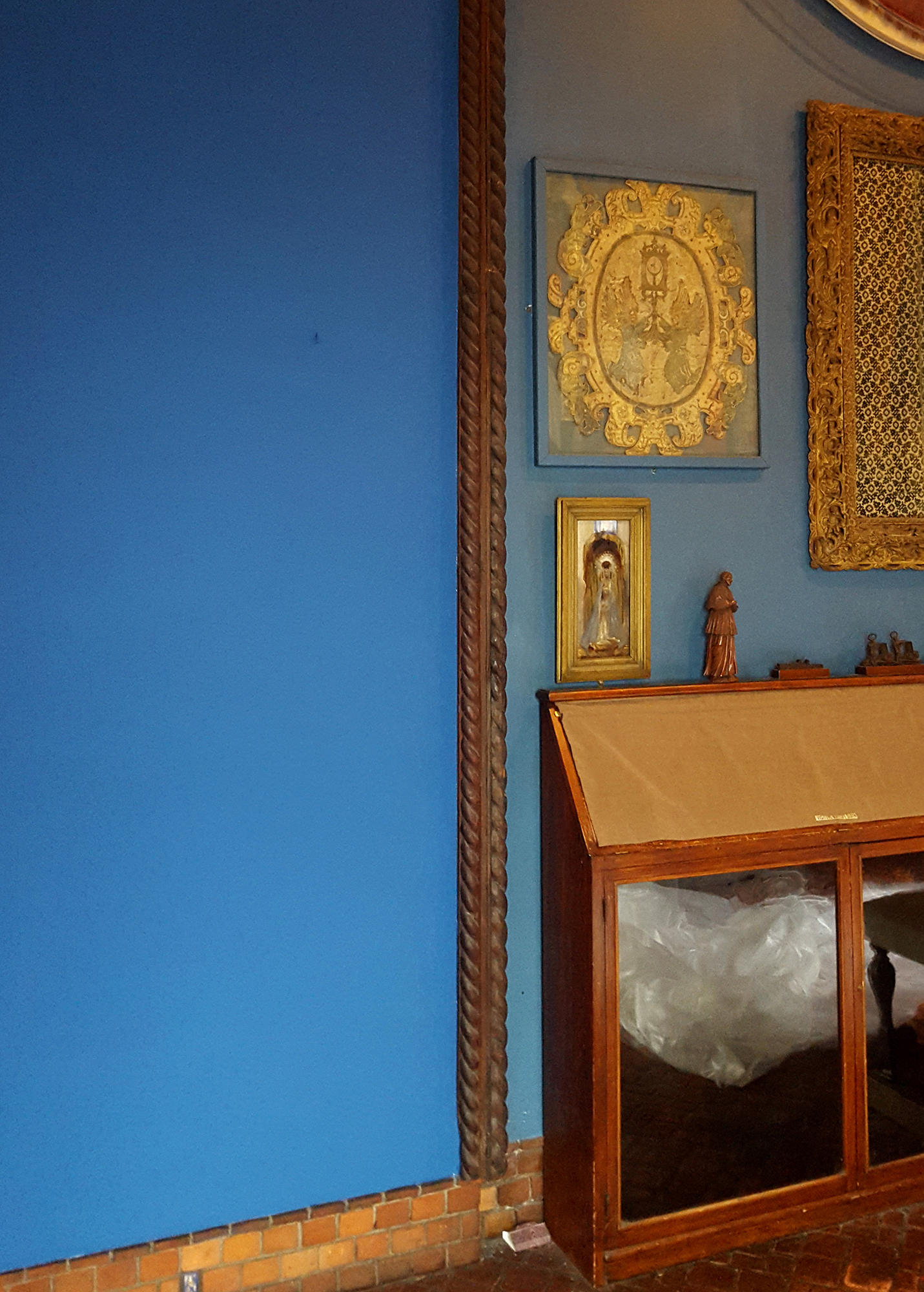If you’ve ever painted your home, or even a room, you know how challenging it can be to achieve the color, finish, and texture that you want. Isabella Stewart Gardner was just as picky about her paint colors in the early 1900’s as we are today.
While Isabella Stewart Gardner adorned the great majority of the gallery walls of her museum in rich, highly patterned fabrics, she chose something very different for the Long Gallery. She painted this space a deep blue color known as Bardini Blue.
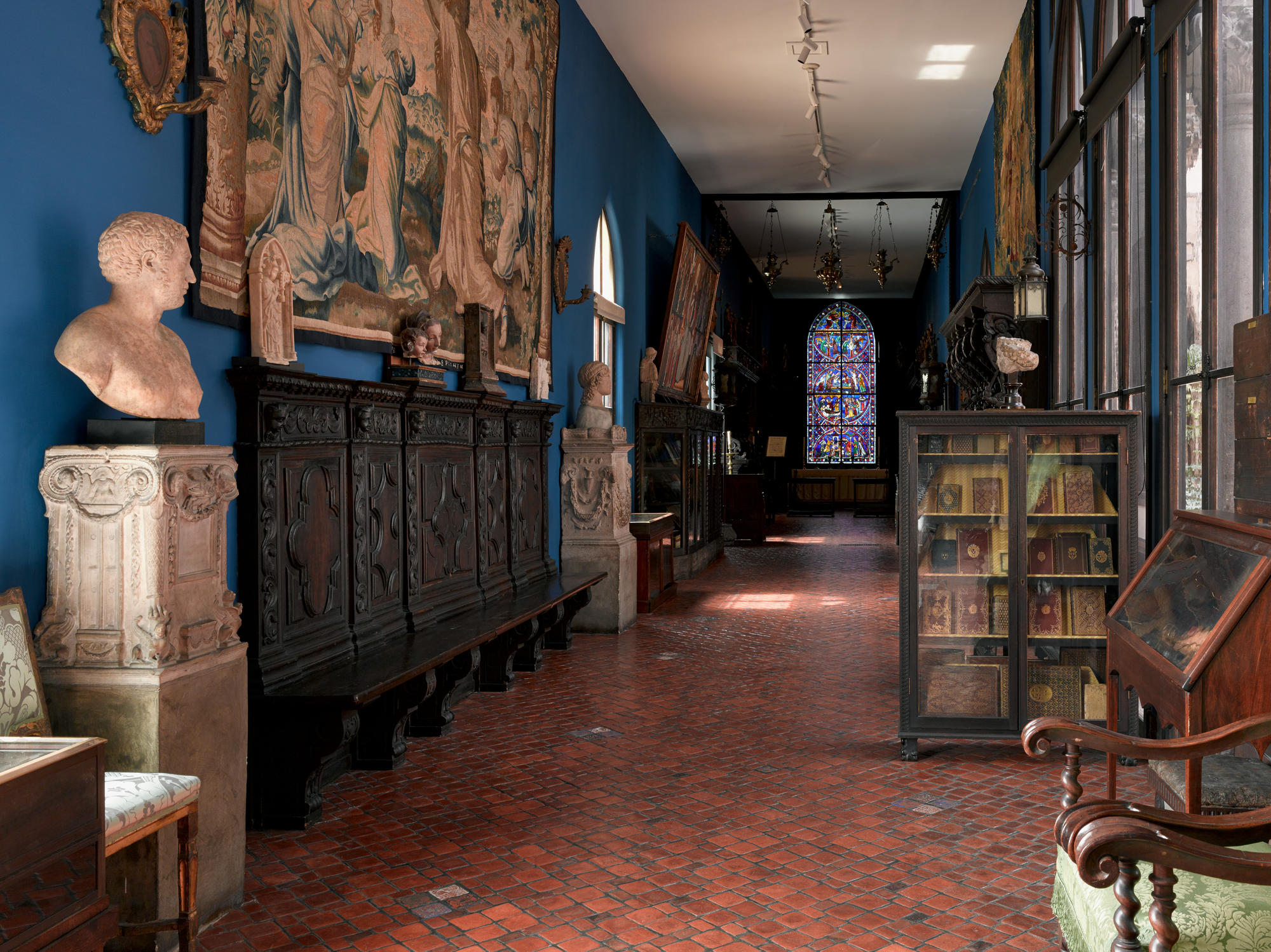
The Long Gallery featuring Bardini Blue paint, 2018
Isabella Stewart Gardner Museum, Boston. Photo: Sean Dungan
Isabella had seen this unique shade in the home of the Florentine antiquarian Stefano Bardini from whom she had purchased several objects.
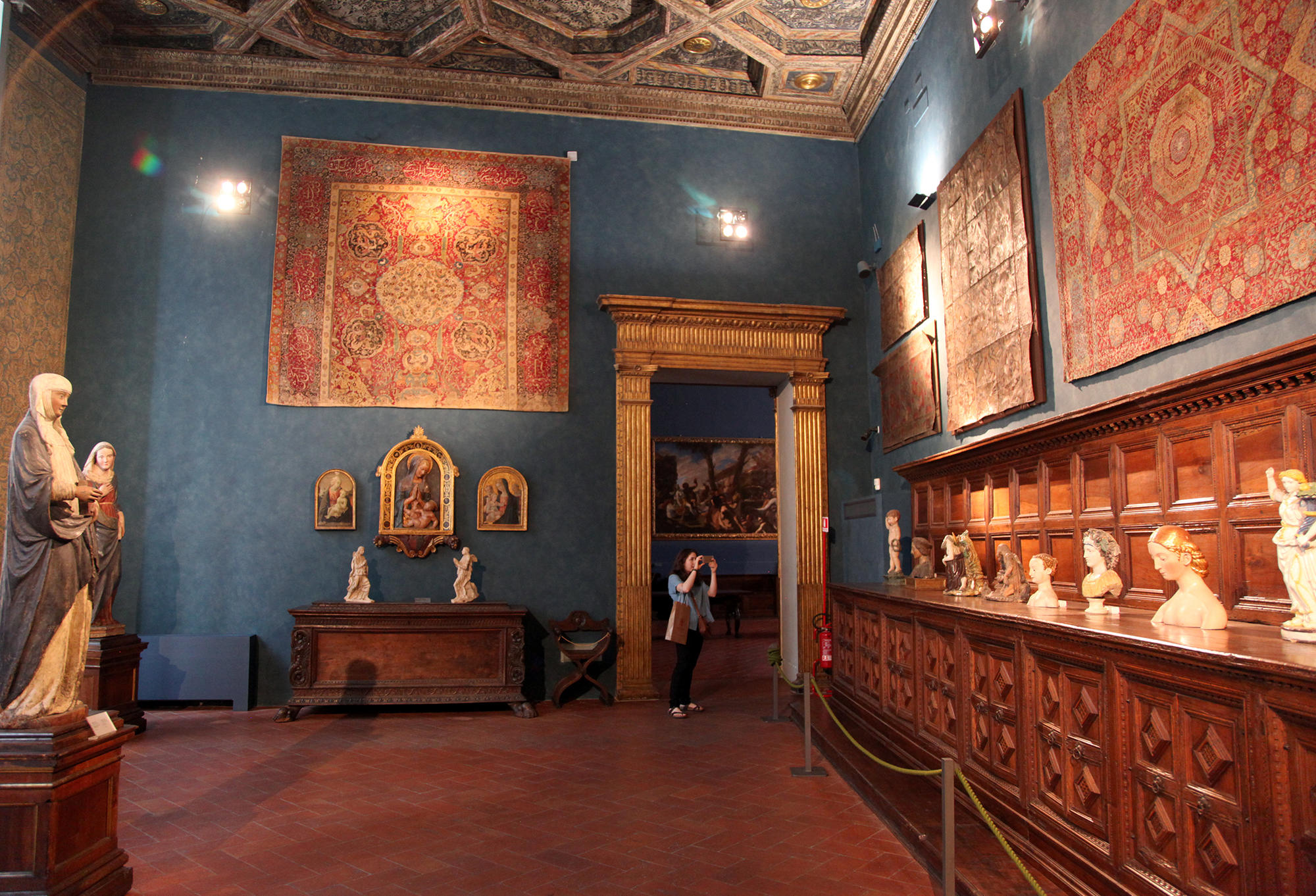
Stefano Bardini Museum, Florence, 2017
On March 4, 1900, Isabella requested that Bernard Berenson “…get on a piece of paper the blue colour that Bardini has on his walls. I want the exact tint.” Months later, she implored Berenson to:
…please do get me a piece of paper painted with the blue of Bardini’s walls. You know you promised me before. I am working hard over my new house. If you ever come here perhaps you may see its walls that are slowly rising…
Berenson provided her not only with a sample of the paint on a piece of paper but also the recipe for recreating this very special color. To this day, the sample and formula are retained in the Museum’s archives.
Originally applied to the walls in the Long Gallery, the Bardini Blue paint was formulated with ultramarine pigments and whiting bound in a water-soluble glue that upon drying produced a deep, luminous blue of unsurpassed intensity. Unfortunately, this type of paint was not very durable, and its surface was easily marred. As the color deteriorated, it was painted over several times but in dull shades which did not accurately match the original.
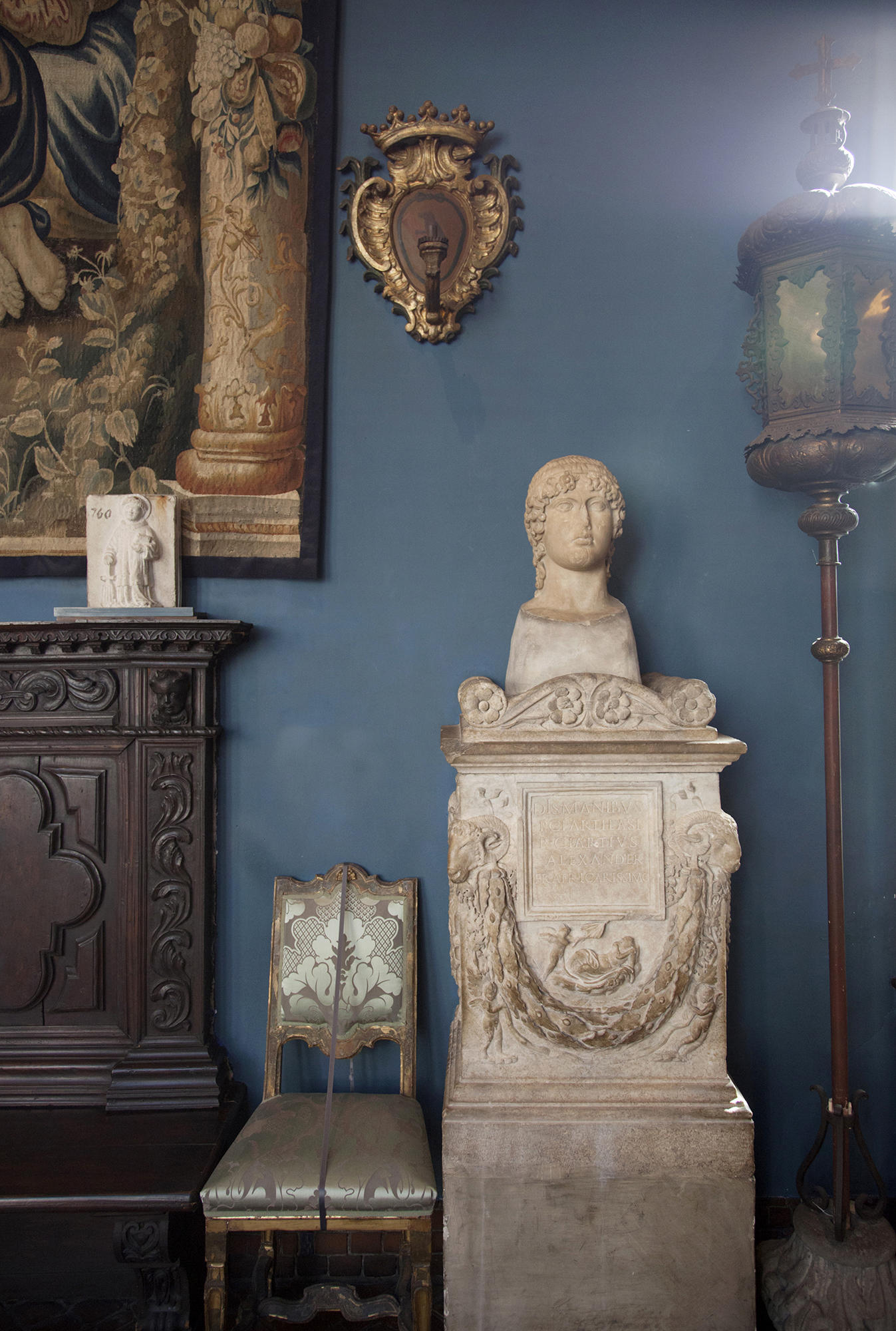
Isabella Stewart Gardner Museum, Boston
Recently, we were finally able to change that. As part of the restoration of the Long Gallery, we conducted new research on Bardini Blue and the room’s walls. First we had to make sure that Isabella actually used the color Berenson had sent her. In fact, her color was somewhat different from Bardini’s paint sample.
To ensure that the color could be as accurately reproduced as possible, the Museum’s conservators undertook several studies to determine the original shade.
We identified small traces of the original color in the Long Gallery and museum staircase, behind furniture and edges of the architecture elements. The color uncovered below the later repaints is a more intense hue than the color sample given to Gardner, suggesting that she modified it to suit her aesthetic vision. To reconstitute the paint, scrapings of the original color traces from the walls were used to create a sample board and allowed to dry. From this, our team visually matched the hue and sheen of the original with a stable, long lasting substitute.
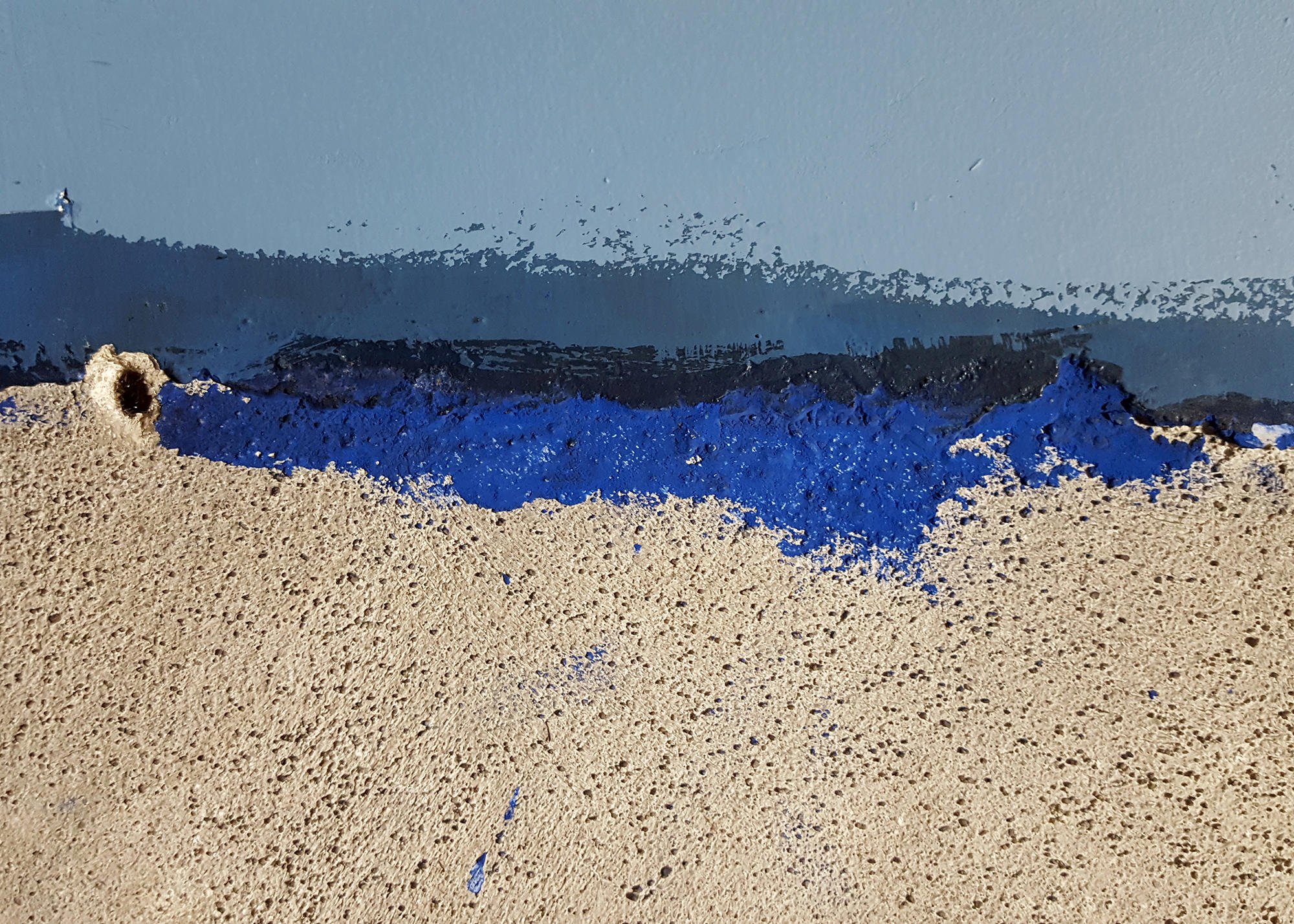
Isabella Stewart Gardner Museum, Boston
The key to this project was reproducing not just the color of the original but its finish, which delivers a luminous matte appearance.
For this, we turned to a special type of paint, first invented in the late 19th century by the scientist Adolph Wilhelm Keim. Patented in 1878, it was developed for King Ludwig I of Bavaria who wanted a paint that gave the appearance of Italian fresco yet was able to withstand the more severe northern climate.
In collaboration with Keim Mineral Paints, we created a custom paint for the Museum that approximated the original blue color of the Long Gallery. For the project, which was carried out in several phases between 2015 and 2018, the Museum’s conservators partnered with decorative painters from John Canning Studios. After preparing the walls, the team applied paint with large hog-hair brushes—rather than modern rollers—to deliver a historically accurate surface.
Visit the Long Gallery to enjoy this special color today!
You Might Also Like

Learn More
Turning Back the Clock: The Raphael Room Textiles

Read More on the Blog
Preserving Our Colorful History: The Soisson Window

Learn More
State-of-the-Art: Conservation at the Gardner Museum
